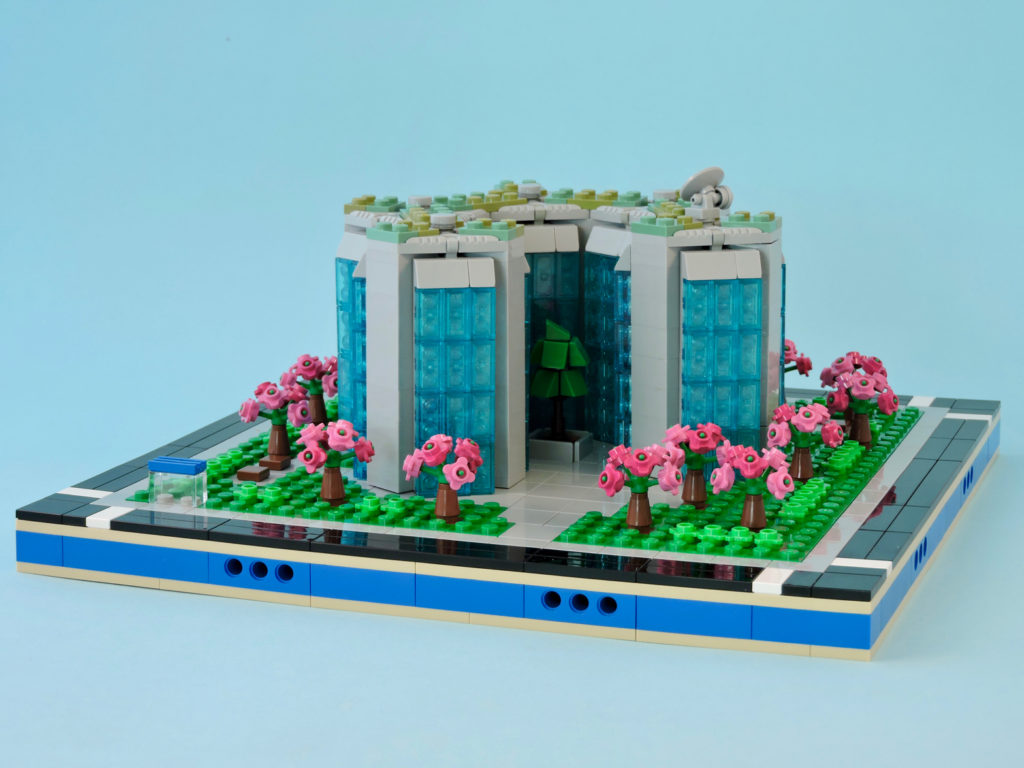
A while back, New Elementary put out a call for participants in one of their Festivals of Parts. They are one of my favorite LEGO blogs and a solid influence on the way that I write about my hobby, so I jumped at the opportunity. I wasn’t alone in wanting to test my skills, so it was lovely to be chosen to receive a bag of Nexogons.
The way this works, is that New Elementary acquires new, exciting elements directly from LEGO. These are then divided up between a number of builders. Each builder, in turn, experiments and creates and shares what they have discovered in the form of articles and cool models.
My Nexogons (those hexagonal shield elements from the new Nexo-Knight battle suits) arrived just before Bricks Cascade and I was already in a final build frenzy. I scrapped together an interesting shape or two, but I wasn’t able to start building right away. Once the convention was in my tail lights, I picked up my scraps and tried to get creative.
Nothing came of that.
Then I finally saw something, and it should be no surprise that it was a Micropolis building. A C-shaped building with lots of glass. It would be the headquarters of some upstart software company, prestigious and glitzy.
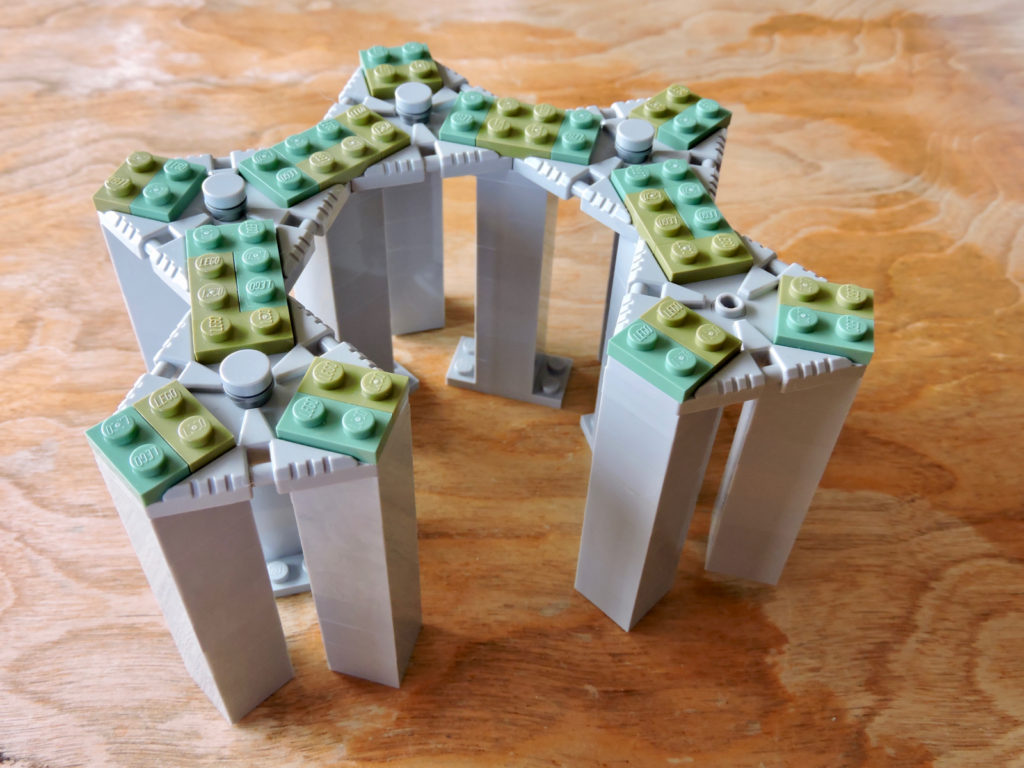
I arranged five of the Nexogons and attached them above and below with plates where their studs aligned. The upright structure of the building is just medium stone gray 2×2 bricks, with a few plates thrown in to get the height right.
On the longer faces of the Nexogons, I would hang window panels from the inset bars. A little fiddling came up with a 3 stud width.
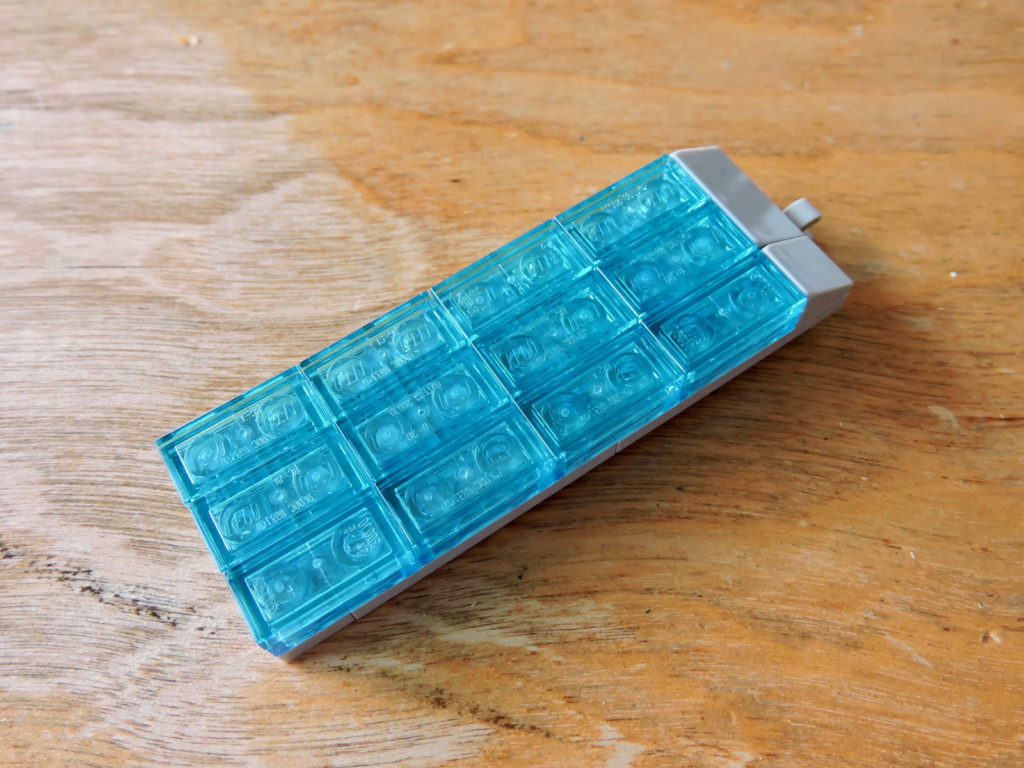
The panel construction is straightforward, two layers of plates, topped with tiles. The layers were necessary to hold everything together, since the dimensions were odd (3 studs by 7 studs). At Bricks Cascade I had been talking to another builder about using clear tiles, and he had pointed out that using a layer of the same color (but plates) underneath made the studs much less blatant. I tried that here and it worked out marvelously. A single clip at the top is how it will be attached.
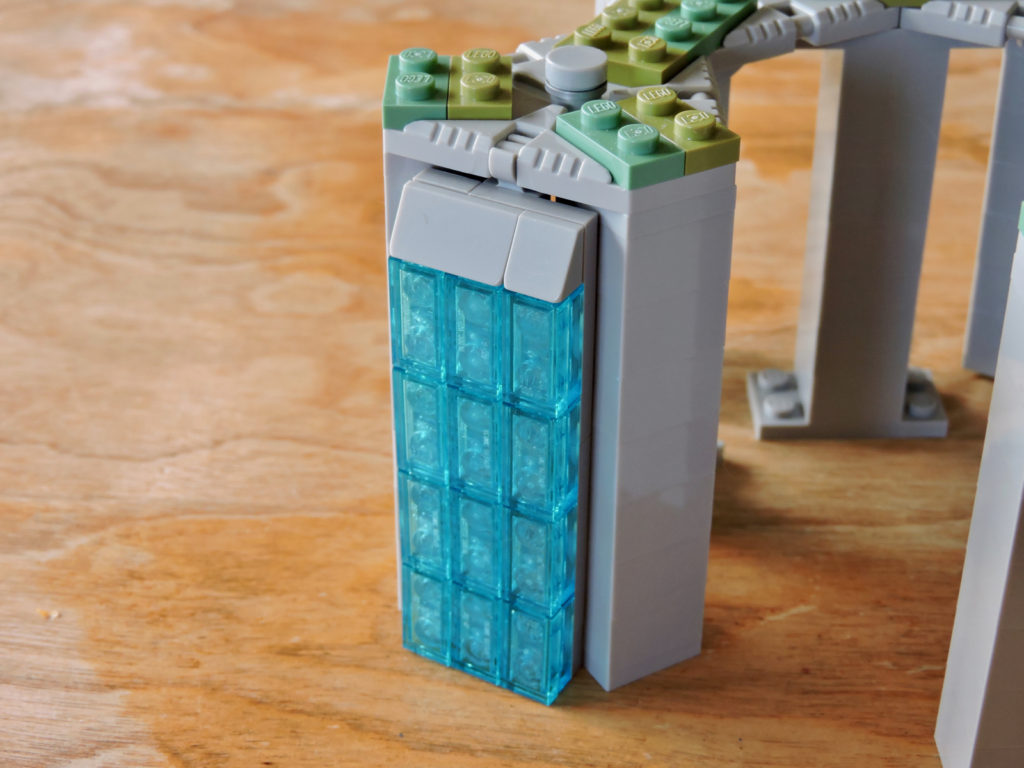
The finished assembly has a great look. There are some thin gaps, but nothing that will detract from the finished model. The extra depth in the translucent elements really helps them catch light.

With the building itself basically done, I turned to the grounds. Size dictated that I would need a whole block. I decided to wrap the building in park-like green space, including picnic tables where employees might eat lunch or take meetings.
Since the footprint of building isn’t rectangular, I made the concrete base particularly irregular. The two bricks are where the building would attach to the base and the couple of bare patches are places where the tiles weren’t needed at all.
As usual, I used dark green plate to denote grass (which would contrast with the sand green and olive plate for the green roof). The reddish-brown 1×1 plates are for trees. I’ve learned over the years that trees will inevitably fall off the model and I will forget where they went.
I used flower plates in bright green for shrubberies, forming an irregular border about the grounds. I just felt right to give each tree a bit of clearance.
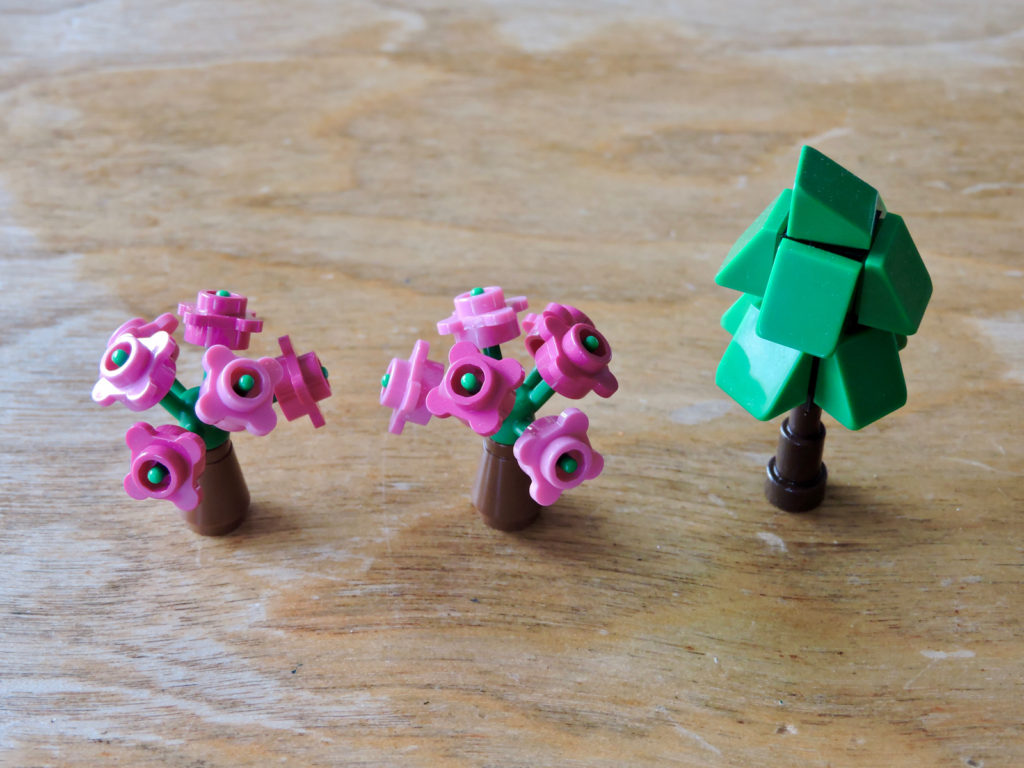
As for the trees, I opted for smaller ornamental varieties (such as cherry trees). Using pink flower plates in two shades and the newer six pronged flower stems worked nicely. The stems fit into the open studs of 1×1 cones, standing in for convincingly colored (if far too thick) trunks. I would have liked to have the flower stems in dark orange, but I had to make due with what I had on hand. I made sure that each tree had an equal number (3) of each shade of pink, but arranged in a different manner. This kept the color organic, yet regular.
I had built a planter box into the middle of the c-shape, so I wanted a different tree there. For this one I pictured a taller conifer, probably a cedar of some sort. I fell back on my tried and true construct of travis bricks and cheese slopes.
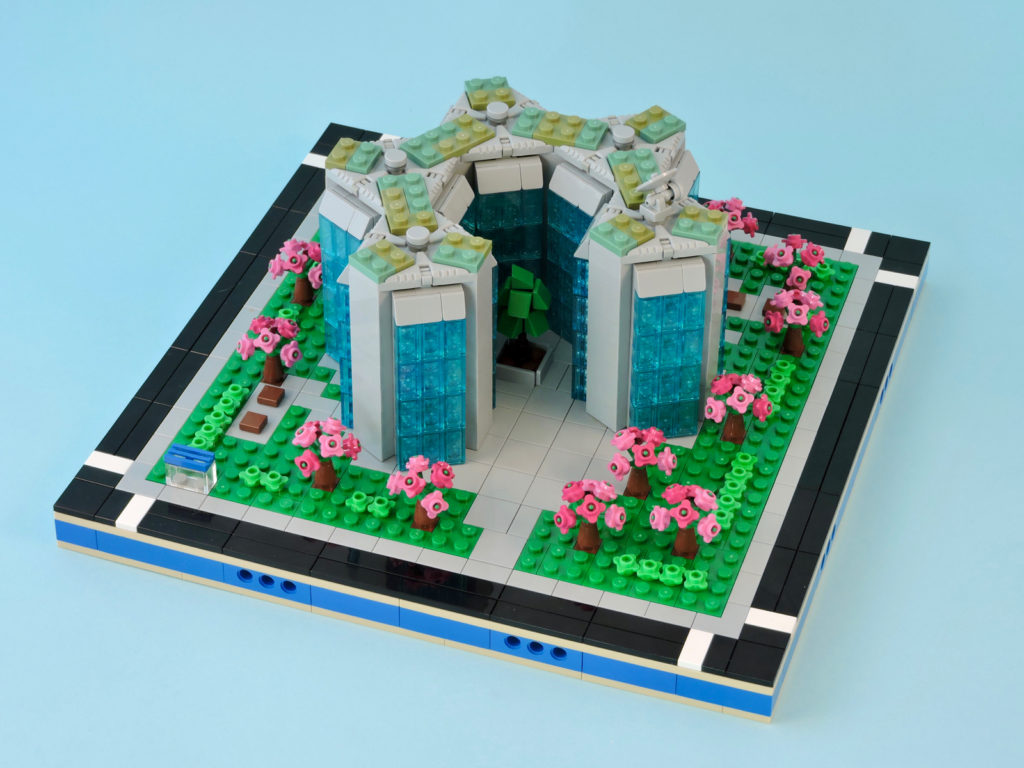
All assembled the building really shines. The park-like grounds frame the building and the angles provided by the Nexogons keeps the building interesting from every angle. Keeping with my general rule, the building has a green roof, with the paler tones of drought resistant grass. There are other details too, attached to half-pins in the Nexogon’s central pin holes, HVAC units and a satellite dish.

From the other side, the angled windows really work. It’s easy to imagine airy workspaces just inside, with views of the bright foliage buffering the city beyond.
Honestly, I would have liked to make the building larger, but the Nexogons dictated. As it stands, this building has four 15ft floors (as indicated by the windows) and a more cramped (and probably windowless) fifth floor. With a rough estimate of about 5k square feet per floor, that makes for a 25k square foot building. Not very big for a commercial office building and a terribly inefficient use of an entire city block.
The finished model is just on the edge of plausibility and looks beautiful, so who am I to complain. Now I just needed to figure out what to do with the other 20 or so Nexogons on my work table.
Keep building and enjoy.